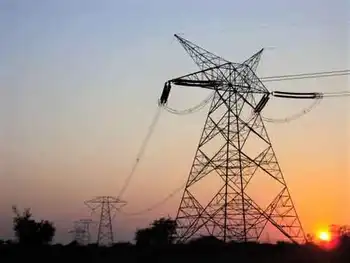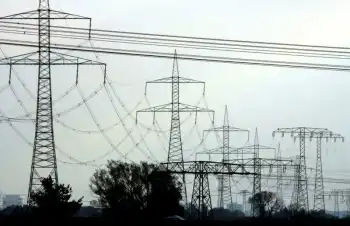Nalcor resolute about Lower Churchill power plan
By CTV News
High Voltage Maintenance Training Online
Our customized live online or in‑person group training can be delivered to your staff at your location.

- Live Online
- 12 hours Instructor-led
- Group Training Available
Unveiled a year ago as the start of a new era of economic co-operation for Atlantic Canada, a joint federal-provincial environmental assessment panel in August concluded that Nalcor “had not demonstrated the justification for the project as a whole in energy and economic terms.”
Now the energy company is making its case for the project in a report to the provinceÂ’s public utilities board, which will review the plan. The board does not have the power to block the project, but its view is likely to influence final decisions.
“We may have a white elephant because we can’t market the power outside the province” to other Maritime provinces and U.S. states with more competitive power prices, former utilities board chair David Vardy said in an interview. Lower Churchill will offer stable electricity prices, “but the bad news is it’s way above the market.”
Mr. Vardy fuelled a heated debate this week with a paper that argues that Muskrat Falls – the first phase of the Lower Churchill development – “is the second or third best solution” for new power development in Newfoundland and Labrador, after other options such as natural gas, small hydroelectric, wind power and demand reduction. “There is a need for more due diligence to look at other options,” he said.
The former regulator and top provincial civil servant said the shale gas revolution is changing the face of the North American energy market by using inexpensive natural gas to fuel power plants, which will make it difficult for Nalcor to compete in export markets.
The government and companies have not yet made a final decision to proceed with the project, but Nalcor has hired SNC-Lavalin Inc. to manage the construction.
Faced with mounting skepticism, Premier Kathy Dunderdale and Nalcor chief executive officer Ed Martin say theyÂ’ve seen nothing to dissuade them from proceeding.
“I have yet to hear any substantive argument that contradicts any of the analysis or research or even the process that we’ve used to get us where we are as we move on,” Ms. Dunderdale said in an interview in her St. John’s office.
She dismissed the growing criticism as misguided and often driven by partisan interests. She won a general election last month defending the project as the Liberal opposition in particular campaigned against it.
Ms. Dunderdale’s predecessor, Danny Williams, announced the deal between Nalcor and Nova Scotia-based Emera Inc. a year ago with great fanfare. The Churchill River hydro development is more than a mere megaproject – it resonates with Newfoundlanders who bitterly resent Quebec’s sweetheart deal in the 1968 Churchill Falls power deal.
The current plan will sidestep any need for Hydro-Québec to transmit the power to market. Lower Churchill will use underwater cables, first from Labrador to Newfoundland, and then to Nova Scotia.
The Lower Churchill has two sites, the 824-megawatt Muskrat Falls and Gull Island, which would have a capacity of 2,250 megawatts when it is eventually built. Nalcor plans to allocate 40 per cent of the Muskrat Falls power to Newfoundland, 20 per cent to Nova Scotia and another 40 per cent for export to other Maritime provinces and the U.S. Northeast or for industrial use in Labrador
In the filing presented to the Public Utilities Board PUB, Nalcor compares the Muskrat Falls project with options that would rely on generating power on the island of Newfoundland, and concludes none of the alternatives would be more economical.
It concluded that electricity prices in 2025 would be roughly 10 per cent lower with Muskrat Falls than they would be if Nalcor opted to develop power sources on the island. Over 50 years, the Lower Churchill project would save the province $2.2-billion, it argues.
In an interview, Nalcor CEO Mr. Martin said the booming province – which has several major mining and energy projects being planned – will need new sources of power by 2015.
He said the economic plan submitted to the PUB does not include revenue from potential power sales beyond Newfoundland, nor does it include the financial savings from a promised federal loan guarantee, which remains subject to due diligence.
“We made the decision on our own that we’d build Muskrat Falls and we’d build the Labrador-island link, and we did that analysis assuming we had no use for the excess power,” he said. “I said to assume there is no value for that [export market] because this is a provincial, stand-alone utility decision.”
But he said Emera – a publicly-traded company that owns Nova Scotia Power as well as utilities in New Brunswick and New England – has existing capacity to export power from Nova Scotia as well as a ready market.











